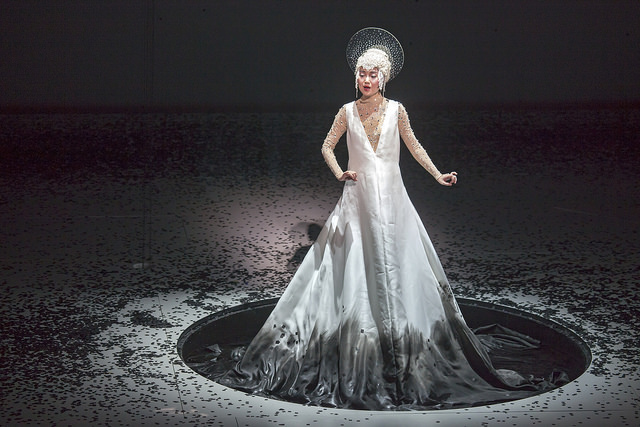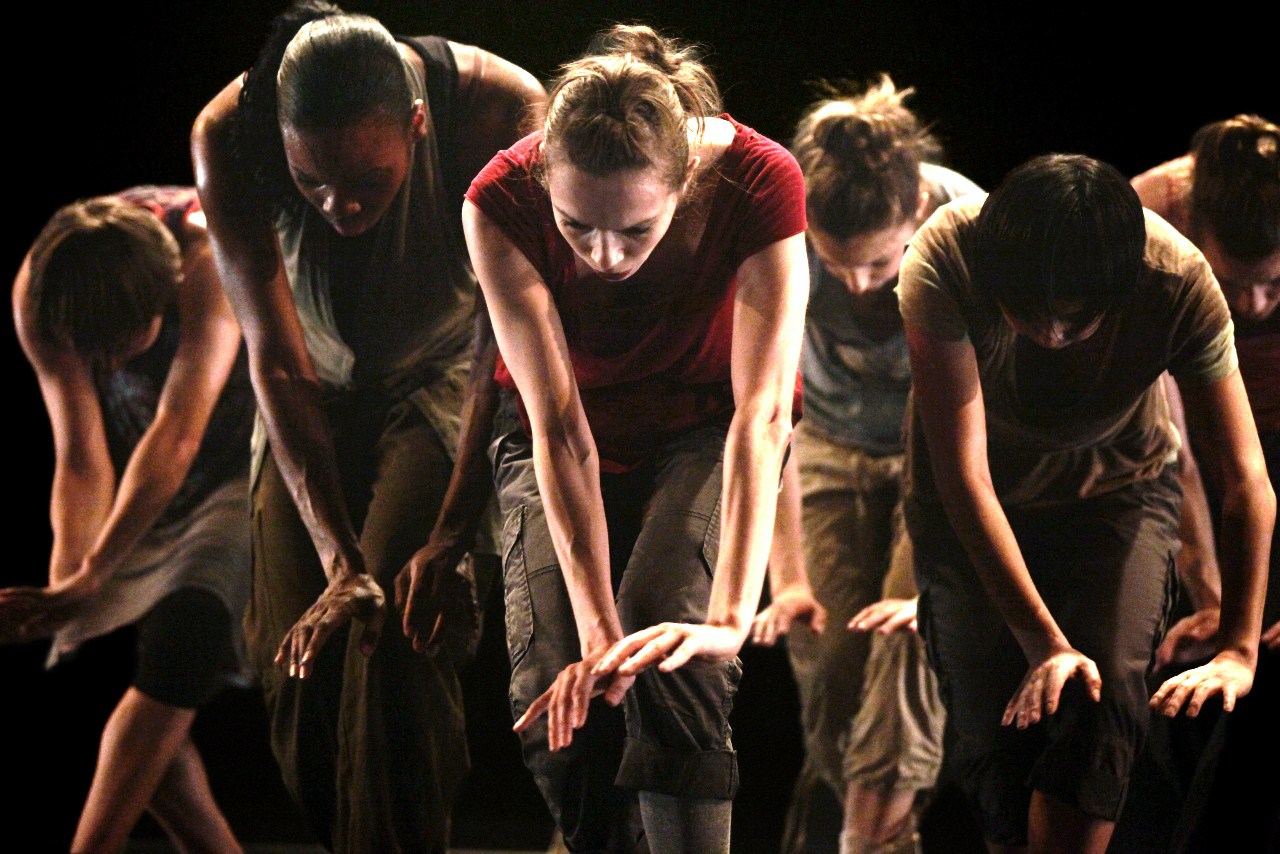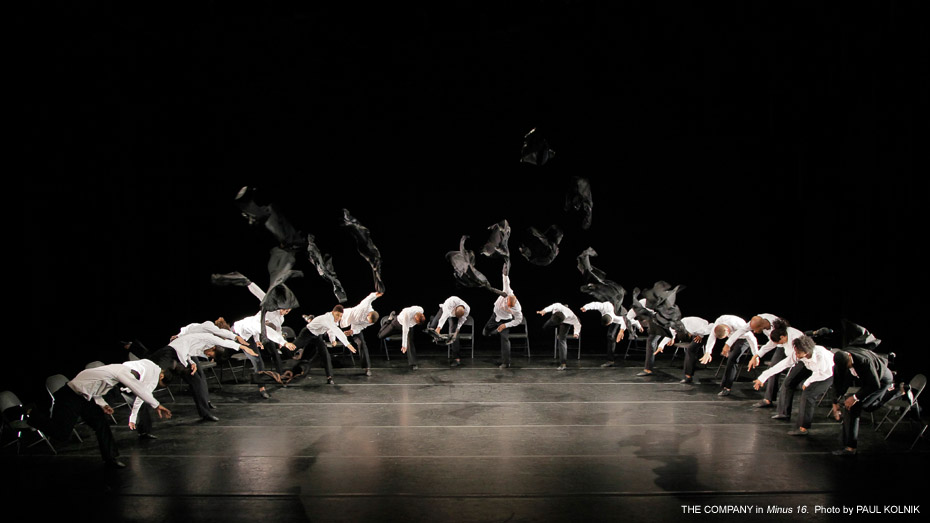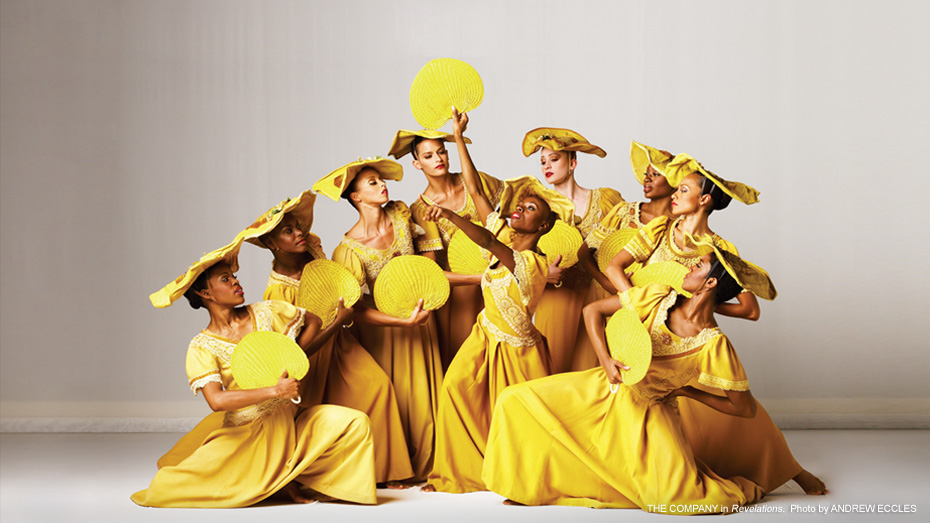I saw three musical performances as part of Spoleto USA over Memorial Day weekend: the raucous old-timey string band Old Crow Medicine Show, the sleek and powerful pop-rock singer/songwriter Brandi Carlile, and Program II of the Bank of America Chamber Music Series curated by Geoff Nuttall.
In 2016, that list is hardly surprising, but it wasn’t too long ago that those first two names would have drawn pause from longtime festival patrons. Spoleto made its reputation on cutting-edge but cosmopolitan “high” art performances, bringing in a fascinating and eclectically curated selection of theatre, opera, dance, and chamber, symphonic, choral, and jazz music. You’ll notice that rock, pop, folk, blues, and country didn’t quite make the cut.
That seems to have shifted (as far as I can tell), in the mid-2000s, when the festival loosened its strictures to allow some favored roots, soul, and folk artists to its stages, sliding them into their Jazz series, closing night finales, and, eventually, as part of their regular music programming.
I used to read this evolution in two ways, both fairly cynical: 1), that the festival was just following the interests and tastes of their older and more staid demographic, both of which had changed considerably since the inaugural Spoleto USA in 1976; 2), that they were trying to be a kind of shortsighted arbiter of contemporary music, selecting the most conservative and retro-minded on of popular contemporary music, in stark contrast to their mostly forward-thinking selections elsewhere.
As snide as that assessment is, it never stopped me from enjoying the high caliber the festival booked in past years, but this year I think I had a change of heart about the why of it.
If you flip both of those assumptions on their head and try to see the positive, forward-thinking rationale behind the curation shift, you seem something fundamentally different. After all, what Spoleto proves year after year is that aging, no-longer mainstream art forms like dance, opera, classical music, and (to a lesser extent) theatre still have an artistic vibrancy to them, that they are creative expressions very much worth keeping around precisely because we still have gifted artists still capable of reinventing or reframing them in a way that’s entertaining and edifying to contemporary audiences.
It’s Geoff Nuttall who probably deserves the most praise for this realization. As a curator and master of ceremonies for the chamber music series he is without compare, capable of bringing ample doses of humor, wit, and expertise to an expansive selection of compositions that he can breathe new life into for the audiences. Program II was bookended by Mozart’s Concerto in B-Flat Major, K. 191, which served to showcase the tremendous talents of bassoonist Peter Kolkay, and Maurice Ravel’s gypsy-derived Tzigane, which saw violinist Livia Sohn blazing away at entrancing melodies and derivations alongside Stephen Prutsman’s piano accompaniment. There was awesome an easy homerun in there with a few Gershwin tunes sung by contratenor Anthony Roth Costanzo, something this Porgy & Bess-obsessed audience lapped up with glee.
My personal favorite of the program, though, was the Kreitzer Sonato. Based on a Leo Tolstory novella that was itself based on a Beethoven sonata, there's an exaggerated sense of theatre and drama built nicely on top of a string quartet that makes for a highly engaging piece of music. Nuttall walked the audience through the story before beginning of the piece, often pausing to note what musical phrases denoted what/when in the action of the story, essentially establishing the vocabulary of the composition in a breezy, accessible fashion that utterly upends the sense of inscrutability classical music performances can occasionally have.
That ability to make classical music sound not only contemporary but almost urgently relevant, I think, is the through line to the festival’s larger curation goals.
Of course, Americana and folk-tinged pop-rock have hardly risen to “high art” status and are far from the relative irrelevancy facing many of the other art forms Spoleto champions, but they are trending down. EDM, hip-hop, “indie” rock and stadium country are the most popular musical forms today, there’s no mistaking it, particularly among younger audiences. And yet there’s so much good, vital music being made outside of those categories.
Old Crow Medicine Show is a prime example of this reality. Although they benefited enormously from the post-O Brother Where Art Thou? folk and old-timey boom (something which seems to have indirectly led to those musical styles’ introduction to Spoleto), they also felt like a band steeped in tradition that was startling new, crafting original songs and sounds out of the most venerable of parts. And even setting the success of “Wagon Wheel” aside, they’ve charted a fascinating path towards wider mainstream acceptance and awareness.
Their sold-out Friday night performance at the Cistern Yard (they also played Thursday) was a work of consummate showmanship, making wonderful nods to the setting, region, and the weekend (a veteran’s shout-out before the anti-war “Levi”) that never felt forced yet always came across as professional. Their battery of singers and ability to slide a radio hit as rock ‘n’ roll as “I Won’t Back Down” into a nicely balanced selection of originals was noteworthy. There was plenty of frenzied fiddling and even some gratuitous hee-haw two stepping, but these guys are truly charting their own song-driven course. They played “Wagon Wheel” of course, to immense enthusiasm to their crowd, but they weren’t owned by it, not by a long shot.
Brandi Carlile, who was forced into TD Arena instead of the Cistern because of the weather, plays with a similar passion. Her milieu is a bit different—she namechecks Crosby, Stills & Nash as inspiration, and the twin giants of Stevie Nicks and Melissa Etheridge hang over her alternatively bittersweet and bombastic folk-rock sound—but you can’t help but be in awe of how much life she breathes into her performances. Flanked by Tim and Phil Hanseroth, two side players who would hardly be notable if they weren’t twins (excepting their rich harmonies), Carlile wills herself into rock god status, with a soaring falsetto one moment and a throaty holler the next. Her pivots from commercially polished pop-rock to gritty blues-tinged grooves and 70s coffeehouse singer/songwriterisms always feel natural yet innervating, as if she’s a great student of rock ‘n’ roll who is occasionally capable of transcending the masters.
Both acts are incredibly able live talents, with seasoned performance styles built for the kind of grueling tour schedules they now need to maintain to make a living at this racket. But I’m drawn most to the idea that they are doing something with traditions that might now feel like they should be a bit solidified—you know, the way we think of jazz, theatre, dance, opera, and all of the other forms Spoleto champions. And that’s when I realized how much I am not only a fan of Spoleto USA as a bounty of artistic riches, but that I’m fully invested in the value system that seems to underpin their curation.
Even if they probably won’t bring in Chance the Rapper next year.
















